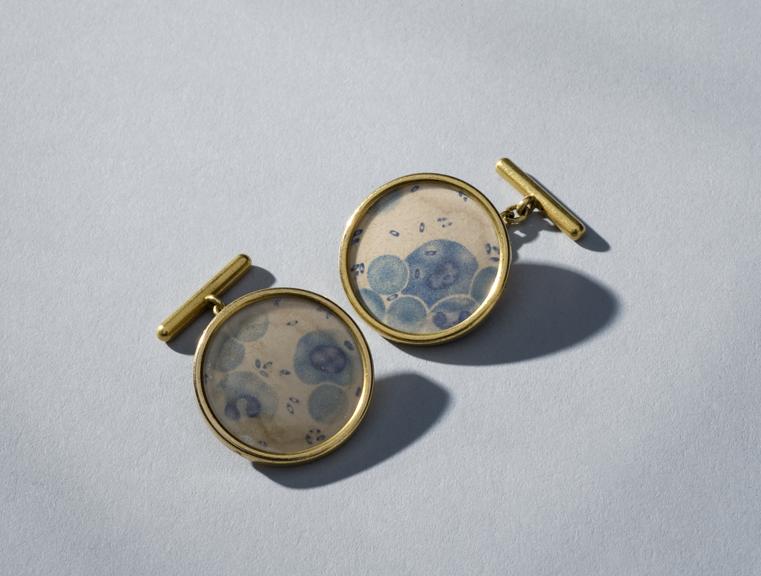
Two gold cuff links, Russia, 1894-1918
Two cuff links, gold, showing plague bacillus, perhaps by Faberge, c. 1900
More
Plague is an infectious disease caused by bacteria. These cufflinks contain pictures of two different strains of these bacteria. The names of the strains are engraved on the back. The plague-causing bacteria were discovered in 1894. It is believed that these cufflinks were made by Fabergé, the celebrated Russian jeweller. The use of these images on the cufflinks suggests the pride taken in the discipline of bacteriology.
- Materials:
- gold (metal) and paper (fibre product)
- Object Number:
- 1981-1605/1
- type:
- cuff links
- Image ©
- The Board of Trustees of the Science Museum












